#re20
Explore tagged Tumblr posts
Text
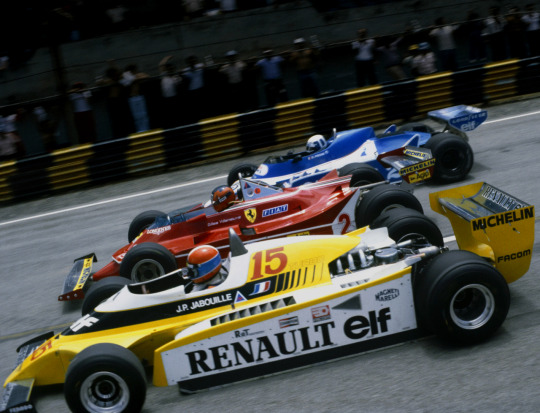
São Paulo, January 27, 1980
Jean-Pierre Jabouille (Renault RE20) Gilles Villeneuve (Ferrari 312T5) Didier Pironi (Ligier JS11/15-Ford)
#formula 1#cars#gilles villeneuve#ferrari 312t5#jean pierre jabouille#renault re20#didier pironi#ligier js11/15
15 notes
·
View notes
Text
And another holy grail microphone in my collection. I’m done buying mics. This year. Maybe

1 note
·
View note
Text
EWY BIG Q&A
hi!! recently i did a q&a on instagram about SLAD. unfortunately (or fortunately?) there were too many questions to answer purely on instagram stories without spamming. here's the ones i couldn't answer on instagram, answered here!
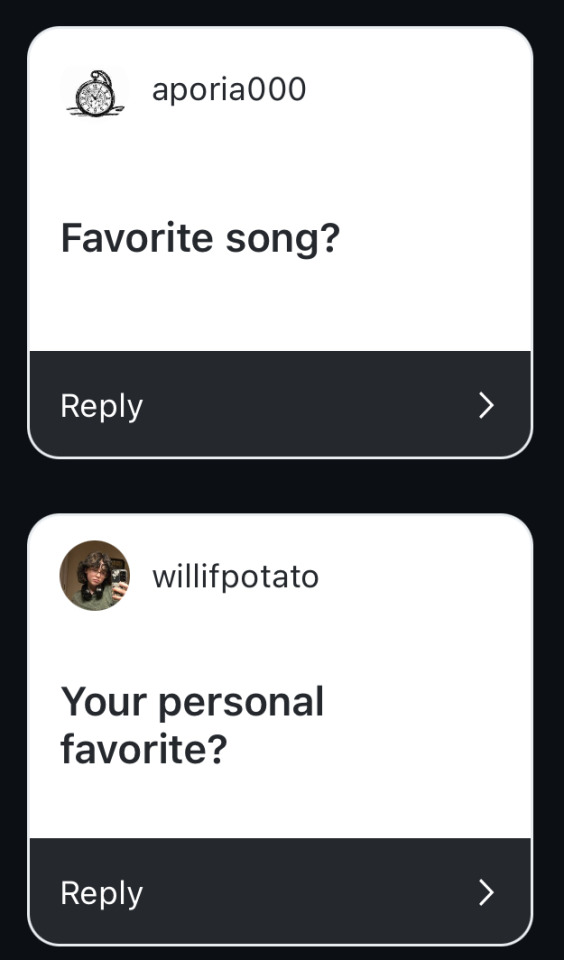
MERLOT, both in terms of my favourite composition and performance
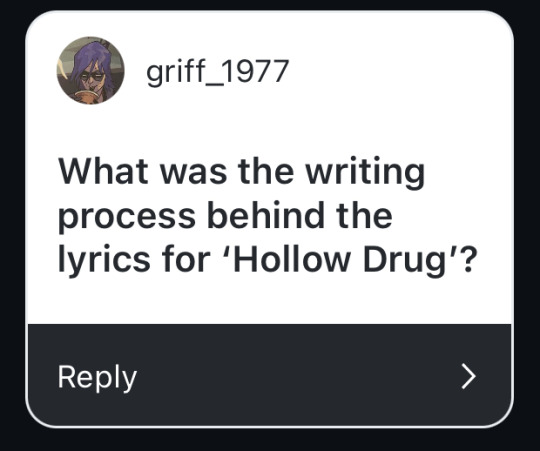
my partner and i were on a break whilst they were studying abroad ("we're only on month 1 of 4"). I just kinda word vomited my feelings. I was feeling pretty depressed at the time I wont lie.
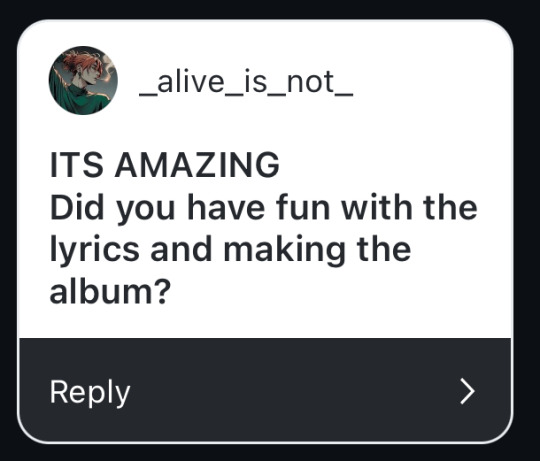
yes i DID!!! this EP was MADE for fun. i wrote the songs specifically to make fun songs to play live. (aside from HOLLOW DRUG)
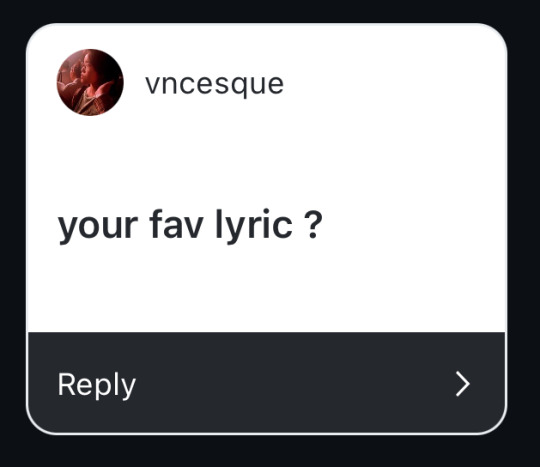
"And I could be displaced from my home And it could be seen on all your phones Is it real? Or is it fake? Look close, do my arms look like legs?"
probs the most lyrically dense I've been?? i'm not sure.
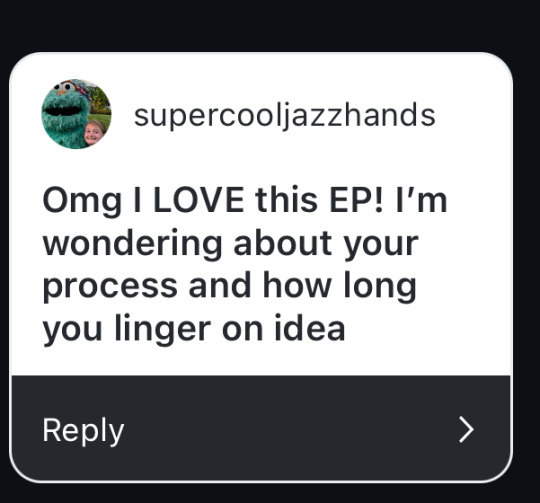
first of all, thank you so much!! second, some songs i write it all in one day but others can take a week or so before i'm fully happy with how its sounding. that being said, i always end up changing something before recording (usually around a month after writing, but in the case of MERLOT, that was recorded only a week after writing).
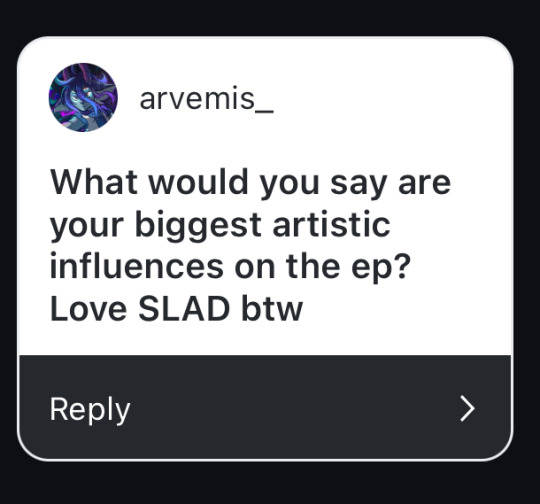
if i had to just name one, it'd be Nirvana. I wrote a 3000 word essay on In Utero for uni and that genuinely inspired me to make these songs. I really loved how Nirvana performed and I thought 'man, if only I had songs like that where I'd have an excuse to go crazy' other influences would include Jeff Rosenstock (my #1 fav artist) and PUP (greatest live show I've ever been to) btw, thank u sm!!

yes,,, very much
unfortunately i havent learnt proper scream technique so all of my screams were done at the very very end of my recording sessions. i think it worked out because that meant i had a lot of pent up frustration
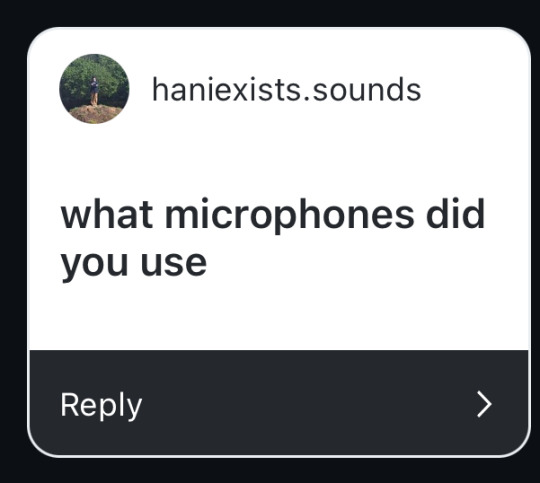
i will start by saying my uni lets me hire out all of these microphones for free (if you don't count the student loan) vocals: SM7b & RE20 (only on sociopathic leech) guitar: AKG C414 matched pair (acoustic and electric) bass: my takes were originally done with an RE20, pretty sure fern just DI'd drums: Audix DP7 + SM57 (for hi-hat) + C414 for room mic's
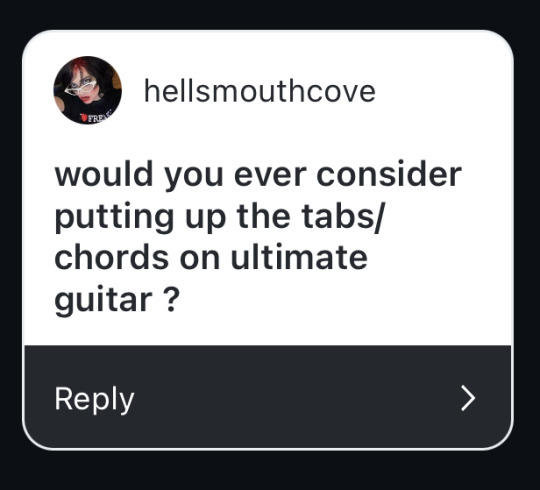
i'll try get this done tomorrow!
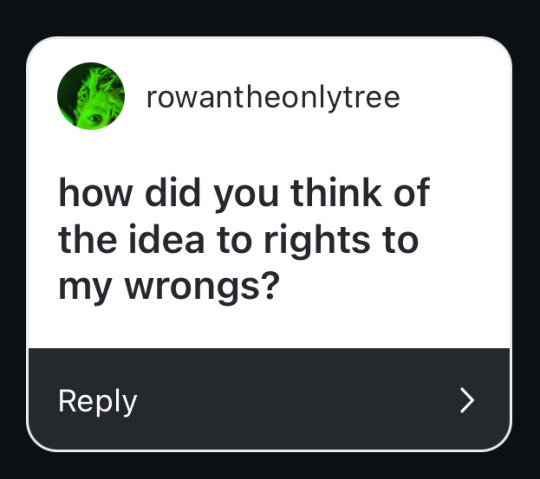
i was in a guitar lesson at uni and we were talking about chromatics in the blues scale. my guitar teacher suggested i try to make a riff using the blues scale and particularly the chromatic part. that riff ended up being the middle 8 section of RIGHTS TO MY WRONGS. the rest of the song basically acted as a vessel to transport this breakdown middle 8 section. hopefully it doesn't come across that way !!!!!! but that was the main idea.
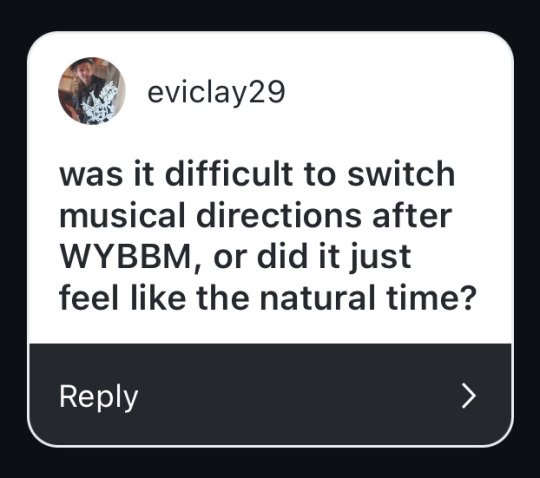
it felt very natural. i'll probably continue to go this direction in my future releases.
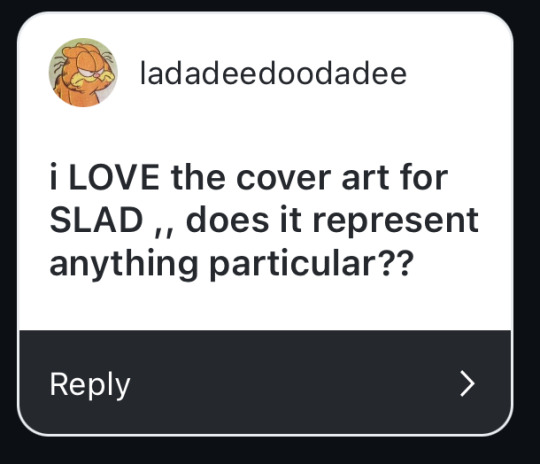
its mainly a reference to SOCIOPATHIC LEECH! 'i could beat you with a bat'. i just wanted something that felt visceral and angry and i feel like izzie really captured that.

yes and no! brett romnes is a super nice guy and very fun to work with. i obviously had my own mixes so he could see what i preferred and essentially made it better. i think there ended up being 4 drafts before we reached a final master.
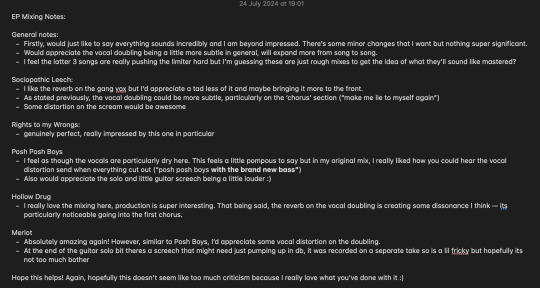
these were my original mixing notes! i think the only thing that really got lost in translation was i added some really subtle vocal distortion at the end of HOLLOW DRUG in my original mix. in the end, i feel empowered by brett because he made it sound like what i felt it should sound like in my head (DOES THIS SENTENCE MAKE SENSE!?)

after i wrote SOCIOPATHIC LEECH and RIGHTS TO MY WRONGS, i was like 'okay, this is the style we're going for, lets do some sort of project in this particular style' i was pretty dead set on an EP since i'd just done an album. so to answer your question, yes and no!

i wish i could put something significant here. im sure theres some psychologist out there who could tell me that the song represents something about me. i was feeling alienated at the time, hopefully this helps? "confess your sins to the crowd, no-one can hear you when you're talking so loud" is definitely about my frustrations with song meanings though
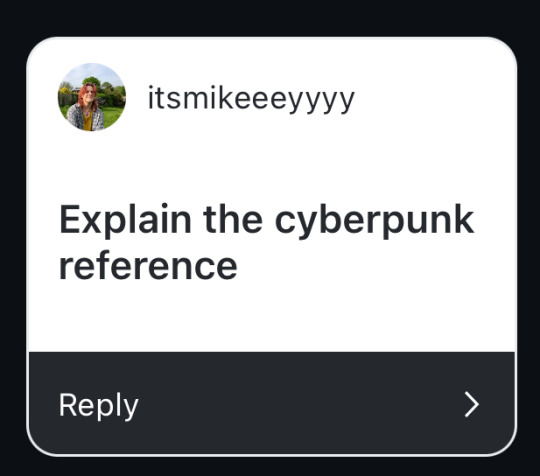
hi mikey!
this person was the GM for a cyberpunk TTRPG game i played in. i wanted to write a cyberpunk themed album at one point but i guess that one merlot line is the closest we'll get.
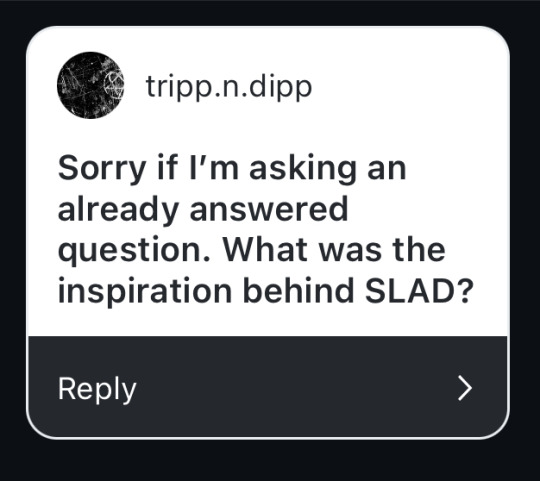
i have semi answered this question but I WANTED TO WRITE SONGS THAT WERE FUN TO PLAY LIVE !!!!! and i think it worked out in the end
THANK YOU EVERYONE WHO WROTE IN !!! MY ASKBOX IS ALWAYS OPEN!!!
18 notes
·
View notes
Text
A maior loucura que eu quase fiz pela Cover, e não foi na fase pós-2010
Por volta de 2009, um colega do meu antigo trabalho iria para os EUA, e muitas pessoas encomendaram que ele fizesse compras diversas. Por muito pouco eu não pedi pra ele comprar um microfone Electrovoice RE 50. O exato microfone de parte dos repórteres do jornalismo da Globo, que também usam Sony, AKG e Beyerdynamic. Um dos que usavam desse microfone era Luiz Fernando Silva Pinto, correspondente em Washington DC. A Globo usa esse modelo desde os anos 70, quando ele ainda era prateado. Bom, se tem imitador do Silvio Santos que vai atrás do Sennheiser MD-405S, porquê não? É, na verdade até hoje só eu pretendi fazer isso. Quaisquer outros grupos de humor que satirizam reportagens de TV usam microfones aleatórios. (O que tem de mais o RE 50? Ele é muito resistente a poeira, umidade e água, além de ser meio grosso, facilitando ser segurado com luvas de frio. Dizem que o apelido desse equipamento é "The Hammer". Preciso pesquisar quantos repórteres usam esse microfone nas famosas coberturas de tempestades e furacões da TV americana onde os repórteres se molham todos.) Embora a EV tenha distribuidor no Brasil, para microfones eles estão mais focados no RE20 (microfone do Emílio Surita no rádio) além de sistemas de alto-falantes (que aí já não me interessam, cansei de PAs, meu antigo emprego só investia nisso...) Embora já tenham estado bem presentes na TV brasileira, com microfones como o RE10 (microfone fixo de palco no SBT, antecedendo microfones gooseneck para a mesma função), RE15 (repórteres da TVS), RE11 ("Papai eu quero me casar"...), PL80 (diversos programas do SBT até 1984 mais ou menos) e outros. Gooseneck é o tipo dos microfones das CPIs em Brasília. A propósito, o RE20 custa DEZ VEZES MAIS do que microfones feitos para PCs, como os HyperX. Essa eles não explicam.
2 notes
·
View notes
Text
From now on I’m going to refer to my dreams for my mic selection. Had a dream last night I used an RE20 for harsh vocals so I’m going to be using that and telling the engineer the idea came to me in a vision.
#weird choice but I can’t argue with the divine wisdom of my subconscious#sorry for talking about microphones so much recently I have a disease
5 notes
·
View notes
Text
Hopping to Victory
Here is Nelson Piquet having a bit if a light moment in downtown Long Beach during the United States Grand Prix West on March 30, 1980 with his Brabham BT49. This race was an opportunity for the normally-aspirated Ford-Cosworth-powered Brabhams to make up ground on the turbo Renault RE20 with which René Arnoux had won the previous two races in Brazil and South Africa. In practice Piquet was ahead…
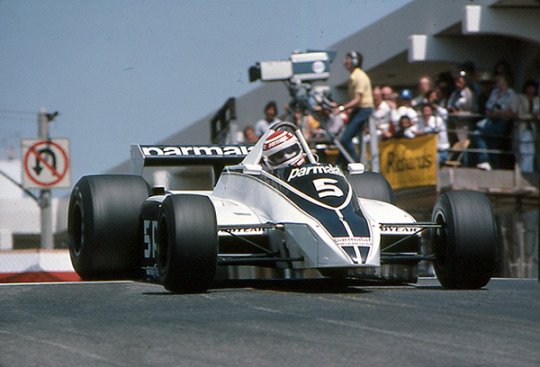
View On WordPress
2 notes
·
View notes
Text
OV394 - Spider-Man: Across the Spider-Verse (2023) – Guest: Joe Shearer (Midwest Film Journal)
In this episode, I welcome my friend Joe Shearer back to the show to review Spider-Man: Across the Spider-Verse! Become a patron for exclusive audio content at Patreon.com/ObsessiveViewer.
Timestamps
Show Start – 00:28
Introducing the Guest – 01:30
Summer Movie Talk - 02:50
Joe's Recent Reviews - 26:42
Review – 38:45
Spider-Man: Across the Spider-Verse – 46:09
Spoiler Review – 1:11:48
Closing the Ep – 1:55:00
Related Links
My 2023 Chain Link Viewing Project List
My 2023 Podcast and Writing Archive
Guardians of the Galaxy Vol. 3 (2023)
Free Time (2023)
In A Good Way (2023)
The Smell of Money (2023)
Project Home (2023)
3D Printing the Future (2023)
Not Just a Picky Eater (2023)
Mike’s Band: As Good As It Gets
Our Theme Song on Spotify
Joe Shearer’s Letterboxd
White Men Can't Jump (2023)
Still: A Michael J. Fox Movie
Unwelcome
Mafia Mamma
Joe’s Writing on Midwest Film Journal
Medium Cool: A Movie Podcast
Help Support the Podcast
Official OV Merch
Obsessive Viewer
Obsessive Viewer Presents: Anthology
Obsessive Viewer Presents: Tower Junkies
Mic Info
Matt: ElectroVoice RE20 into RØDEcaster Pro II (Firmware: 1.2.2). Processing: High Pass Filter, DeEsser, Compressor, and Master Compellor enabled. Recorded in the Living Room
Joe: Tonor USB Microphone
Episode Homepage: ObsessiveViewer.com/OV394
Check out this episode!
#the obsessive viewer#podcast#movies#television#audio#reviews#criticism#movie news#theater#movie theaters#netflix#hulu#amazon prime#hbogo#hbonow#hbo#game of thrones
2 notes
·
View notes
Text
Best Dynamic Mic for Podcasts, Vocals, and Live Performances

When it comes to creating professional-quality audio, The best dynamic mic is a versatile and reliable choice. Whether you’re recording a podcast, performing vocals, or engaging in live performances, finding the right mic can make all the difference.
Why Choose a Dynamic Microphone?
Dynamic mics are built for durability and deliver excellent sound quality in noisy environments. Their design minimizes background noise, making them ideal for live performances and recording in less-than-ideal acoustic settings.
Top Picks for Every Need
Shure SM7B – A podcasting legend known for its smooth sound and noise isolation.
Electro-Voice RE20 – Perfect for vocals and broadcasting with a clear, natural tone.
Sennheiser e835 – A budget-friendly option great for live vocals and consistent performance.
Features to Look For
Durability: Ensure it can withstand frequent use.
Frequency Response: Look for tailored responses for vocals or instruments.
Noise Isolation: Choose one that minimizes ambient sound.
Investing in the best dynamic mic ensures you capture every note and word with precision.
0 notes
Text
Hey... Singers, Vocalists and Artists, we've got a question for YOU!!!
Shure SM7B vs. Electro-Voice RE20
Which one wins???
instagram
#singer#music#songwriter#songwriting#producer#singers#musicproducer#musician#musicians#songwriters#Singing#vocals#Vocalist#Vocalists#Vocal Recording#Recording Vocals#Vocal Recording Service#Vocal Recording Services#Studio#production studio#studiolife#music studio#recording studio#Studio Recording#Studio Recording Services#vocal mixing#session vocals#Microphone#Microphones#Instagram
1 note
·
View note
Text
Best Microphones for Different Singing Styles in Live Performances
When it comes to live performances, the choice of microphone can significantly impact the quality of your sound. Whether you're a pop singer, a jazz vocalist, or a rock frontman, selecting the best microphone for singing live is essential to bring out the nuances of your voice and captivate your audience. With so many options available, it's crucial to find a mic that matches your singing style, performance environment, and technical requirements.
In this article, we’ll explore the top microphones suited for various singing styles and live settings. We'll also discuss what makes a microphone ideal for each genre and why investing in the best microphone for live vocals is a game-changer for any performer.
Why the Right Microphone Matters for Live Singing
Every singing style has unique demands. A microphone that works brilliantly for a soft jazz vocalist might not suit a powerful rock singer. Similarly, live performances introduce variables like background noise, venue acoustics, and crowd dynamics, which require robust equipment. This is why finding the best microphone for singing live is about more than just sound quality—it's about ensuring your voice shines through, regardless of the setting.
Microphones designed for live performances typically fall into two categories: dynamic microphones and condenser microphones. Dynamic mics are durable, handle high sound pressure, and excel in noisy environments, making them ideal for most live gigs. Condenser mics, on the other hand, are more sensitive and offer better detail, but they require careful handling and controlled environments.
Top Microphones for Different Singing Styles
1. Pop and R&B Singers
Pop and R&B vocalists require microphones that emphasize clarity and smoothness. These genres often involve dynamic vocal ranges and intricate runs, so the mic needs to capture both highs and lows with precision. The Shure SM58, a classic choice for live performances, is widely regarded as one of the best microphones for live vocals in pop music. Its built-in pop filter reduces plosive sounds, while its cardioid polar pattern minimizes background noise.
For R&B singers who want more detail, the AKG C636 condenser microphone is an excellent option. It delivers studio-quality sound in live settings, ensuring every vocal run and riff is heard.
2. Rock and Metal Vocalists
Rock and metal singers are known for their powerful voices and high-energy performances. For these genres, a microphone must handle high sound pressure levels (SPL) without distortion. The Sennheiser e935 is a standout choice for its durability and ability to cut through loud instruments, making it one of the best microphones for singing live in rock and metal settings.
Another excellent option is the Electro-Voice RE20, which provides consistent sound quality even when the vocalist moves around. This is crucial for rock frontmen who are often on the move during performances.
3. Jazz and Blues Vocalists
Jazz and blues demand warmth and richness in vocal tones. For these genres, microphones that enhance the natural timbre of the voice are preferred. The Neumann KMS 105 is a premium option that offers exceptional clarity and warmth, making it one of the best microphones for live vocals in intimate jazz clubs and blues performances.
For a more budget-friendly option, the Audio-Technica AE5400 delivers professional-grade sound with a focus on vocal detail, ensuring every nuance of the performance is heard.
4. Country and Folk Singers
Country and folk singers often perform in acoustic settings, where the microphone's ability to capture natural tones and textures is critical. The Shure Beta 87A is a popular choice for its bright sound and ability to handle subtle vocal inflections. Its supercardioid pattern ensures minimal interference from surrounding instruments, making it one of the best microphones for singing live in acoustic genres.
For folk artists who prefer a warmer sound, the Rode M1 dynamic microphone is a reliable and cost-effective option.
5. Classical and Opera Singers
Classical and opera singers require microphones that can capture the full dynamic range of their voices. Since these performances often take place in acoustically rich venues, the microphone must complement the space without overpowering the natural sound. The AKG C520 headworn condenser microphone is an excellent choice, offering hands-free operation and superior vocal clarity.
For handheld options, the Sennheiser MD 441-U provides outstanding accuracy and is considered one of the best microphones for live vocals in classical settings.
Features to Look for in the Best Microphones for Live Singing
When selecting the best microphone for singing live, keep the following features in mind:
Durability: Live performances can be unpredictable, so a microphone should withstand wear and tear.
Polar Pattern: Cardioid and supercardioid patterns are ideal for live settings as they focus on the singer’s voice while rejecting background noise.
Sound Quality: Look for microphones that enhance your voice’s natural tone and handle dynamic ranges well.
Feedback Resistance: Feedback can ruin a performance, so choose a mic designed to minimize this issue.
Comfort and Handling: For handheld microphones, ensure they are lightweight and easy to grip.
Conclusion
The best microphone for singing live varies depending on your singing style, performance needs, and budget. Whether you're a powerhouse rock vocalist, a smooth jazz singer, or an intimate folk artist, there’s a microphone out there tailored to your needs. Investing in the best microphone for live vocals not only elevates your performance but also ensures your audience hears you at your very best.
By understanding your genre and the unique demands of live performances, you can confidently choose a microphone that complements your voice and style. From dynamic mics for high-energy gigs to sensitive condensers for detailed vocal work, the right microphone is a crucial tool in every singer’s arsenal.
0 notes
Text
This week I have been working with a young band to cut a song for their new release. They have been cutting their own demos on a cassette four track but wanted to do one in studio as a lead in to the rest of the album. We spent a bit of time talking about guitars at the start. The feel was start with Nirvana - Bleach style sound; thick but loose with lots of drive. After playing with a few sounds, we locked into a slightly driven AC30 top boost and then used a JHS Pack Rat to really drive the amp. After some back and forth on different Rat models, we settled in on the 'Caroline' mode that offered a lot of gain with some overtones not present elsewhere. For microphones, I used my trusty pair of an Ear Trumpet Labs Edwina and a Sennheiser MD421 II on the AC30. I like the similar but different tonal qualities of each, especially in the top end when dealing with distortion. It really allows it to sound like two different amps in a lot of ways. For the drums, I stuck to my normal array of microphones. Sennheiser e902 on the kick, e905 on the snare top, e904 on the rack and floor toms, SM7B on the hats, and a matched pair of Lewitt 140AIR condensors as overheads. I like this set up for a rock band as it allows me to run live off the floor and get good sounds, plus it feels a lot like how I would engineer it live. If I were to change anything, I would have lowered the overheads a bit to more closely mic the cymbals as Sam is a bit of a hard hitter. I also ran an ElectroVoice RE20 as a room mic; I originally had considered using a large diaphragm condensor like an ETL Edwina or Rode NT1A from my arsenal but, in a smaller room like mine, liked the idea of being able to be more unidirectional and aim directly at kick drum from across the room.
While we tracked the guitar and drums live off the floor, we tracked bass and vocals separately. Sam played my Fender Jaguar bass and we put it through a SansAmp Bass Driver DI and a vintage Traynor MonoBlock II into a Traynor TC1510 cabinet with the EV RE20 on a 10" speaker. We dialed in a slight drive sound through the Bass Driver, but tried to keep it somewhat clean and smooth to contrast with the high gain of the guitar.
Since picking it up on the cheap second hand, the EV RE20 has also been my go to mic for vocals in the studio and we again went with it for this one. Rick doesn't particularly sing loud but is fairly consistent in his volume and cadence, so getting takes wasn't difficult. Overall, we cut three full takes and a couple of partial takes to go through. Largely, the final vocal line was taken from two main takes with occasional words or lines from others, but again his singing was consistent so it was fairly easy to choose the best takes for the final track.
Sam, Rick, and I spent about the last hour or so really dialing in a working reference mix so we could come back to it with fresh ears the next day. The biggest direction from the band was to get the guitar most present in the mix. Mixing the two mics together, we got a really aggressive sound that needed a touch of taming on the high end. Once the bass was added, it really thickened and added punch to the mix. We mixed the drums to this, starting with overheads and then adding the individual channels. I have a tendency to set kick very high in the mix, so I tried to be aware in my placement of this. Sam and I differ in our preference of snare sound, so I tried to find a happy medium between his like for high end and my beefier preference. Ultimately, it is a bit thinner than I prefer but still has a lot of presence from the overheads.
The vocals is where we spent a lot of time creatively. We started with some EQ and the Abbey Road J37 Tape Saturation plug in to get a bit of a fuzzy sound. We tried some different reverb sounds to give space, but ultimately ended up working with the delay in the Greg Wells VoiceCentric plugin to get where we wanted. I like this plugin for vocal compression, so it ended up being a good way to get both on the vocal chain.
After leaving it to fresh ears, I played with the mix a bit and changed some compression settings the next day. I went back to the EQs on the kick and snare but the band to be more my taste but the band ended up preferring where we were previously and we changed it back. We added more delay and I cleaned up a bit of EQ in the Master chain while adding some loudness and compression on the final mix. Overall, it was a quick job on a scrappy song but we all ended up with something we were happy with and the band will be releasing it on time for their show on Saturday, October 11 at Gobblefest 30 here in Sydney.
#cblocals#cape breton#diy#project studio#recording studio#punk rock#grunge#live music#music blog#album#gobblefest#ac30#premier drums#sennheiser#shure#electrovoice#pro tools#apple imac#allen & heath#qu-pac#kali audio#fender jaguar#traynor#lewitt mics
0 notes
Text
HVAC School Podcast: For Techs, By Techs: A Masterclass In Indie Podcasting

Podcasting before 2008 was a content landscape with two competing strategies. The mainstream strategy, which had worked for radio, TV, books, and music, was to appeal to the widest audience possible. The more revolutionary strategy was for podcasts to appeal to a small, niche group and offer content and a supportive community to a group of listeners with shared interests.
I remember seeing early 2008 podcasts that focused on such narrow topics as Superman comics, The Beatles White Album, a man who wrote reviews on local bakeries, a sewing podcast called Sew What, and a show about welding.
As large, corporatized networks have invaded podcasting, they've largely reverted to the mainstream strategy -- broad appeal to generate the largest number of ears for advertising.
Fear not, podcasting fans. Independent podcasting is still a fertile ground for those shows that may have only 1,000 listeners. For example, there is a podcast about watercolor tattoos. One about bananas. Only bananas. And one about sounds that storms make.
Today, I will introduce to an independent podcast that exemplifies that the revolutionary strategy to serve a well-defined, sometimes limited in potential listeners, but focused exclusively on its granular topics.
The podcast is called HVAC School -- For Techs, By Techs. It is a show by HVAC Tech Bryan Orr, an Orlando, Fl-based HVAC professional. The show has been on since September 2016. If you think Bryan's podcast is some local-yokel operation, check out his website.
Orr has courses for HVAC techs, information on events like HVAC symposiums, HVAC job posts, merch called HVAC Rocket Science Collection, videos, tech tips and quizzes. He even has a tool list, recommendations for HVAC apps, and software recommendations specially for HVAC Techs.
In effect, Bryan Orr has it all for an HVAC tech.

"I started the podcast eight years ago, mostly out of curiosity and a desire to share what I was learning," notes Bryan Orr.
The focus of Orr's podcast is on the HVACR Tech (The R is for Refrigeration). That's why it's called For Techs, By Techs. His episodes, while murky science and magical Harry Potter-type wizardry to laypeople like us, are valuable knowledge and training for an HVAC Tech.
Here are some recent episodes: Modulating compressors, testing dehumidifiers, preventing low voltage issues, pressure limiting valves, and using refrigerant.
In case you think all the episodes are HVAC technical in nature, read just a slice of his other more philosophical and mentoring episodes: Stubborn old techs, STOP overthinking, stewarding younger techs, Teaching communication confidence, starting an internal training program, focus on your goals, and women in HVAC.
I've listened to over 20 episodes, and it seems that any HVAC Tech can garner so much knowledge and practical tips from listening to this show. Orr is smart in that he has these periodic Q&A episodes where he plays a question from a tech and then answers that question. For example, answering a question about the resistance of older techs to change, Orr recommends understanding the older tech's perspective and recognizes that fear of change can overwhelm us. Instead of confrontation, he recommends collaboration. It's a thoughtful, modulated view. There is a persistent trope that people in blur-collar jobs are there because of a lack of analytical acumen. Yet, in every episode, Orr proves that he has the intuitive sense and investigative skills to master the job.
Orr explains his journey on the technical side of podcasting. "Initially, I ran into quite a few technical challenges, especially with audio quality. I tried to fix a lot of it in post-production, which was time-consuming and not always effective. It wasn’t until I started using the Shure SM7B and the Electro-Voice RE20 microphones, along with the Rodecaster board, that things got a lot smoother."
"As for being a host, I don’t actually consider myself all that great," Orr says modestly. "I listen to people like Ira Glass, Jad Abumrad, and the team behind Radiolab, and I feel pretty inadequate by comparison. But like anything else, it’s a journey. I think it’s all about staying curious, wanting to improve, and practicing a lot."
Here, Orr's modesty gets the best of him because he is an excellent host. He's articulate, excellent at explaining complex concepts, empathetic, and has a natural understanding of narrative dexterity. Co-founder and President of Kalos Services in Clermont, Florida (20 miles from Orlando), Bryan Orr started the company with his dad when he was 17. He regularly helps his team train and troubleshoot as a working contractor. But if you ask him about it (and we did), "He’ll say he’s just keeping busy."
"The same goes for my HVAC career," Orr observes. "I’ve always been driven by a desire to learn and a general dissatisfaction with my past work. That’s what keeps me pushing to get better." As for monetization for an independent podcast, Bryan Orr could hold a class on it. First, he has a slate of sponsors -- all in the HVAC industry, so there's a natural synergy there. Sponsors include Carrier (AC), Refrigeration Technologies, and ESCO Institute, which publishes training manuals, curriculum packages, assessment exams, specialty training packages, and custom publishing solutions for the HVACR and building science fields.
Orr's website is a champion LEGO set with building blocks of content from training courses, podcast episodes, events, job postings, and merchandise. It's safe to say that Orr has a more comprehensive and "sticky" website than high-dollar, network-supported podcasts do. Look, I realize that the majority of the people still reading this article are not HVAC Techs. You may never listen to Bryan Orr's podcast. However, HVAC Tech Podcast: For Techs, By Techs should serve as a model for many independent podcasters on how to develop, produce, and monetize their podcasts. Maybe it's because Bryan Orr is from Orlando, where magic is in the air, but his podcast proves that podcasting can be successful when properly positioned for a dedicated niche audience.
Finally, as a society, we burden blue-collar jobs such as HVAC Tech with myriad negative connotations. Listen to some of these episodes about air flow, negative pressure, humidity, wiring, venting, and refrigeration, then you will discover that these techs are indeed climate control detectives of the highest order.
I may be too hasty in describing HVAC Techs as a niche audience. There are over 390,000 techs working in the U.S. Roughly 110 million American households (89% of the total number of households in the nation) are equipped with air conditioning units, according to the 2020 Residential Energy Consumption Survey
Employment of heating, air conditioning, and ventilation mechanics and installers is projected to grow five percent from 2021 to 2031.
Check out HVAC Tech Podcast: For Techs, By Techs. When Bryan Orr was asked about his legacy, he replied, "Creativity for the betterment of others."
0 notes
Text
Electro-Voice RE20

171 notes
·
View notes
Text
Unveiling the Power of Dynamic Microphones: Your Complete Guide
Dynamic microphones are a ubiquitous and essential tool in the world of audio recording and live sound reinforcement. Known for their durability and versatility, these microphones are favored by musicians, broadcasters, and audio engineers alike. In this comprehensive guide, we'll delve into the world of dynamic microphones, exploring how they work, their applications, and the top models available today.
Understanding Dynamic Microphones:
1. How Dynamic Microphones Work:
dynamic microphone operate on electromagnetic induction. When sound waves hit the microphone's diaphragm, it moves a coil of wire within a magnetic field, generating an electrical current that mirrors the sound wave.
2. Durability and Reliability:
- Dynamic microphones are robust and can handle high sound pressure levels without distortion, making them ideal for stage performances and capturing loud sound sources.
3. No Need for External Power:
- Unlike condenser microphones, dynamic microphones do not require external power sources like phantom power. They can be connected directly to a mixer or amplifier.
Applications of Dynamic Microphones:
1. Live Sound Reinforcement:
- Dynamic microphones are the go-to choice for miking live musical performances, including vocals, drums, and guitar amplifiers, due to their ruggedness and resistance to feedback.

2. Studio Recording:
- While condenser microphones are common in studios, dynamic microphones find use in recording instruments like electric guitars, snare drums, and bass amplifiers, providing a punchy sound.
3. Broadcasting and Podcasting:
- Many radio hosts and podcasters rely on dynamic microphones for their durability and ability to reject ambient noise.
4. Instrumental and Vocal Amplification:
- Dynamic mics are often used to amplify musical instruments, such as harmonicas, brass instruments, and percussion.
Top Dynamic Microphones on the Market:
1. Shure SM58:
- Renowned for its durability and clear vocal reproduction, the Shure SM58 is a staple on stages worldwide.
2. Sennheiser MD 421 II:
- This microphone is prized for its versatility, excelling at capturing vocals, drums, and guitar amps.
3. Electro-Voice RE20:
- The RE20 is a broadcast standard, known for its warm and smooth sound quality.
4. AKG D112:
- A favorite for kick drum miking, the AKG D112 provides punchy low-end response.
Tips for Using Dynamic Microphones:
1. Close-Miking Technique:
- Keep the microphone close to the sound source for better isolation and reduced ambient noise pickup.
2. Windscreen and Pop Filter:
- Attach a windscreen or pop filter to minimize plosive sounds and protect the microphone from moisture.
3. Proper Handling:
- Dynamic microphones are rugged, but gentle handling ensures longevity. Avoid dropping or subjecting them to extreme conditions.
Conclusion:
Dynamic microphones are an integral part of the audio industry, offering reliability and versatility in a variety of applications. Whether you're performing on stage, recording in the studio, or broadcasting your voice to the world, a quality dynamic microphone is an essential tool for capturing sound accurately and effectively. With an array of options available, you can find the perfect dynamic microphone to suit your needs and elevate your audio endeavors.
For more info. visit us:
gaming mic
podcast micusb microphones
0 notes
Video
instagram
#gearporn #techno #technomusic #dawlesstechno #korg #ms20 #sq1 #boss #re20 #synthesizer #synths #synthporn https://www.instagram.com/p/CPhCzygBIVg/?utm_medium=tumblr
5 notes
·
View notes
